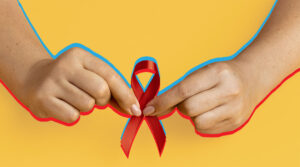Monkeypox is spreading throughout the world without, to date, strong measures being taken to stop it. The good news is that it is not a new virus, since it had already been identified about five decades ago, in some African countries.
The bad new is not only that it is now in every region of the planet, but that it doesn’t seem to behave in the same way that it has until now. Understanding these changes, both in their form of transmission and in their presentation (signs and symptoms) is important, since they can provide a guideline for a better response to the health emergency.
Sexual transmission
Monkeypox is not a sexually transmitted infection (STI), since the strict definition of these infections is that their way of passing from one person to another is, mainly, sexual activity. Whether the microorganisms are present in the sexual fluids or in the genital organs (or both), this is the main condition to include them in that category.
On the African continent, Monkeypox was transmitted mainly through human-ape contact, either circumstantial or during hunting activities. However, in Europe and the rest of the world, transmission has been observed to occur mostly during sexual intercourse.
A study recently published in the medical journal The New England Journal of Medicine, which brings together data from 16 countries from all regions of the world, was given the task of collecting information on this global outbreak of Monkeypox to identify how it is behaving the infection. The results were different from those expected.
To begin with, it was identified that the lesions (ulcers or pustules) that seemed to be the first to appear were located in the genital, anal, and throat areas. In addition, 98% of the cases registered in May and June last (the period covered by the study) had occurred in gay or bisexual men.
For the researchers, this is a clear indication that Monkeypox is being transmitted sexually, and that lesions in the anus – genital and oral area are indicative of the point of entry of the virus into the body.
Signs of infection
Smallpox (considered eradicated for several decades) has as its characteristic symptoms fever, headache and general malaise, followed by lesions (ulcers) in the mouth and throat, and other types of lesions (pustules) on the face, arms and trunk.
In the case of Monkeypox, while it was endemic, it presented in a similar way to that in humans: fever, papules on the face and trunk, and swollen glands. But the cases recorded in this outbreak in the rest of the world are behaving differently.
Of a total of 528 cases analyzed in the study, the most common area where skin lesions appeared was the anus – genital area, with 73%, and the most interesting thing is that there were several cases (54) that did not have areas of the body covered with the ampoules, but presented a single lesion that, moreover, could have been confused with another STI or even with a buried hair.
For this reason, it is very important that, in the event of any alteration in the skin, any suspicion that you may have an STI (be it Monkeypox or another), it is essential to go to the doctor so that he can do a laboratory test and diagnose correctly.
What should I pay attention to?
Thanks to the mentioned study, it was discovered that the symptoms (or the order of their appearance) have changed with respect to the Monkeypox that was known. Even these researchers didn’t come up with a list of symptoms as such, but you can take a few things into account to seek medical attention if you have any suspicions.
- Fever
- Severe pain when swallowing or evacuating (mucosal lesions are occurring very frequently in this outbreak)
- Skin lesions such as blisters, papules, pustules or scabs (they can all be present at the same time)
- Swelling of the lymph nodes
- Muscle pain
- Headache
Remember that Monkeypox can affect anyone, and it is best not to self-medicate. Go to the health service where they can perform a screening test in the laboratory, and thus give you the appropriate treatment.
At AHF Latin America and the Caribbean we take care of people’s sexual health through our quality services. If you want to get an HIV test or want free condoms, come to our offices in your country and schedule your appointment now.






